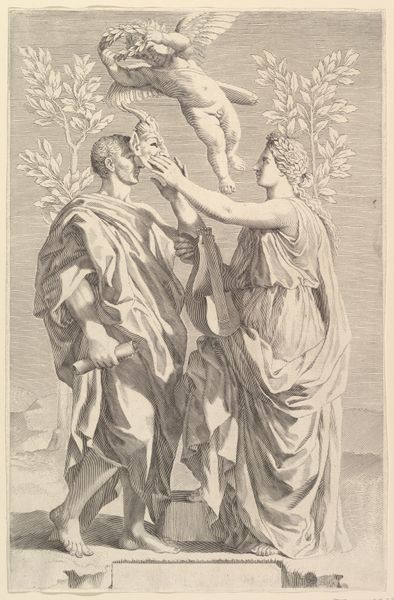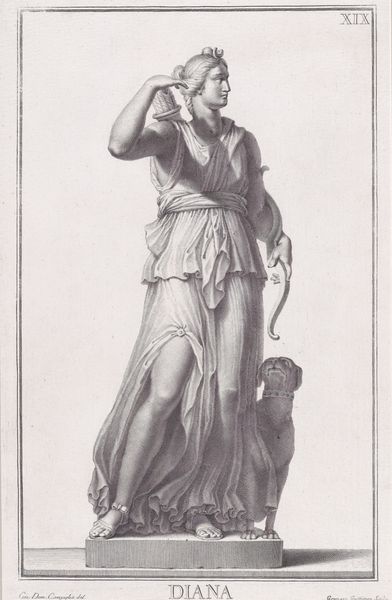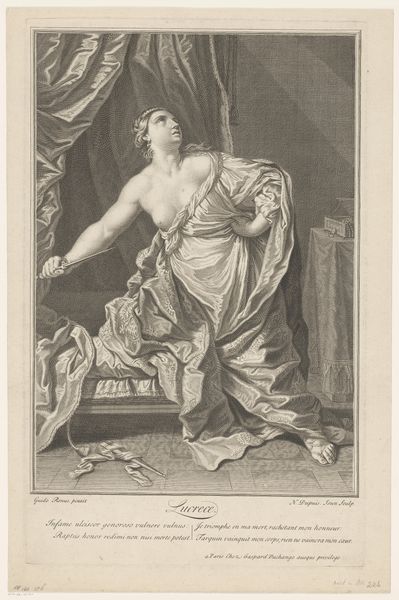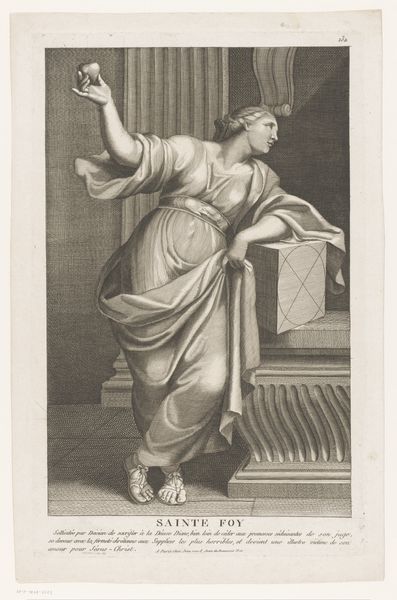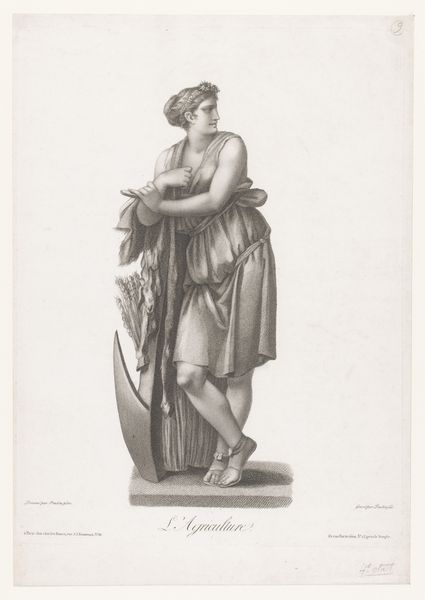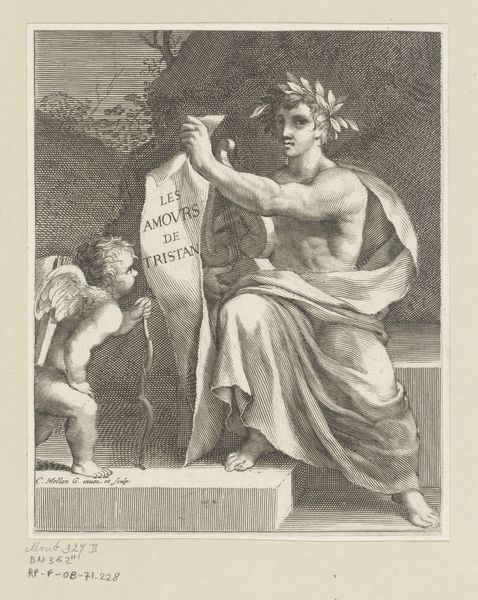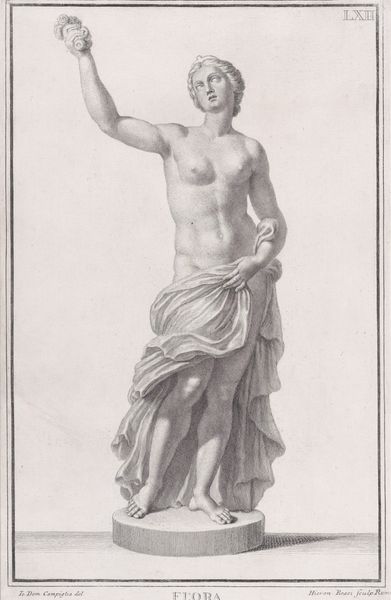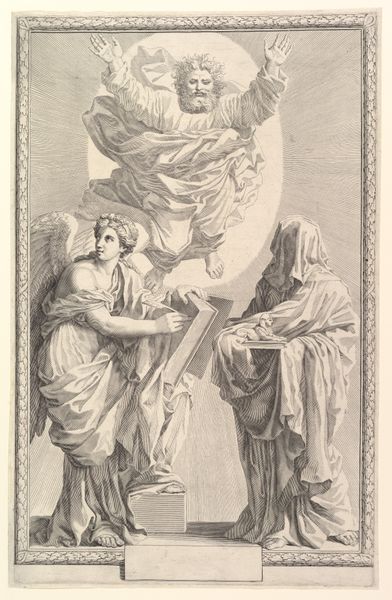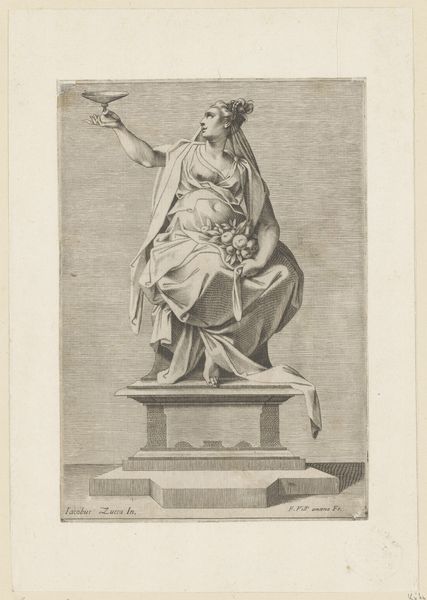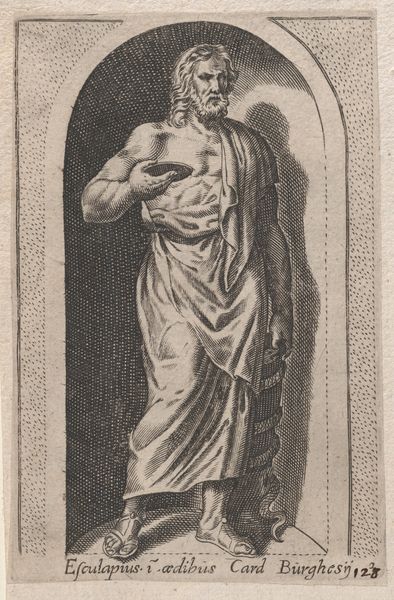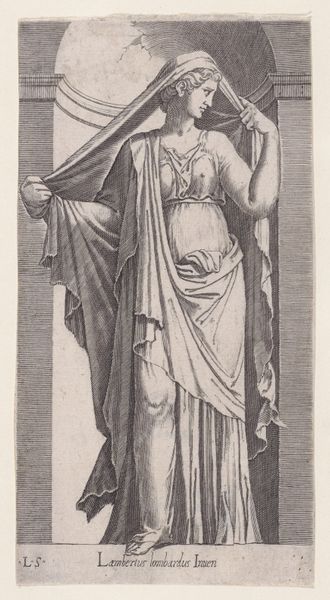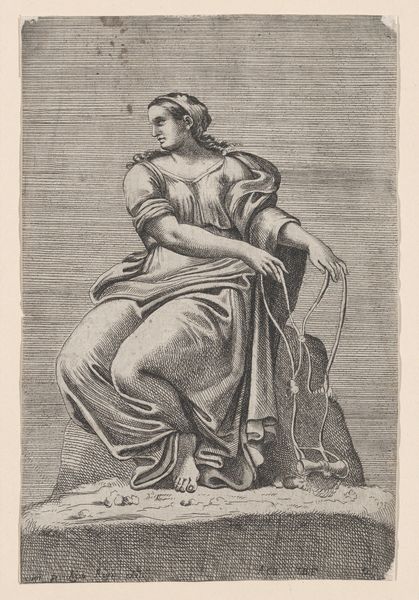
print, engraving
#
allegory
#
baroque
# print
#
figuration
#
engraving
Dimensions: height 550 mm, width 247 mm
Copyright: Rijks Museum: Open Domain
Editor: Here we have Claude Mellan’s 1648 engraving, "These over theologie van Antoine Talon". The crisp lines and allegorical scene feel incredibly deliberate. I’m struck by how tangible everything seems, even though it's a print. What strikes you when you look at it? Curator: It's the deliberate mark-making for me. Engraving, as a process, demands precision, immense labor and allows for reproducible images. Think about what that meant in 1648. Access to imagery, even of allegorical subjects, becomes slightly more democratized. How does the materiality of ink on paper shift power in the ways that people could consume these ideas? Editor: That's interesting. So, the accessibility of the print medium itself is key? How would that accessibility have changed the audience for these theological ideas, and thus change what they signify? Curator: Exactly. Engravings allowed for wider circulation, bringing these theological concepts to a broader audience. We see figuration here, but the choice of engraving moves away from painting which would be more aligned with wealthy patronage. So how does the labor of production shape and influence the meaning of the "theologie van Antoine Talon"? Editor: It almost challenges the traditional association of grand allegorical themes with exclusive art forms. What's represented shifts based on the method of production. Curator: Precisely! Mellan's choice makes it so, and makes me wonder how this choice comments on Antoine Talon and the cultural function of theology itself at that time. What does such precision in a mode of reproducibility ultimately convey about the ideas represented? Editor: So much to consider in a single print! Thanks; I hadn't really considered that angle before – it really opens up how I think about prints now!
Comments
No comments
Be the first to comment and join the conversation on the ultimate creative platform.
